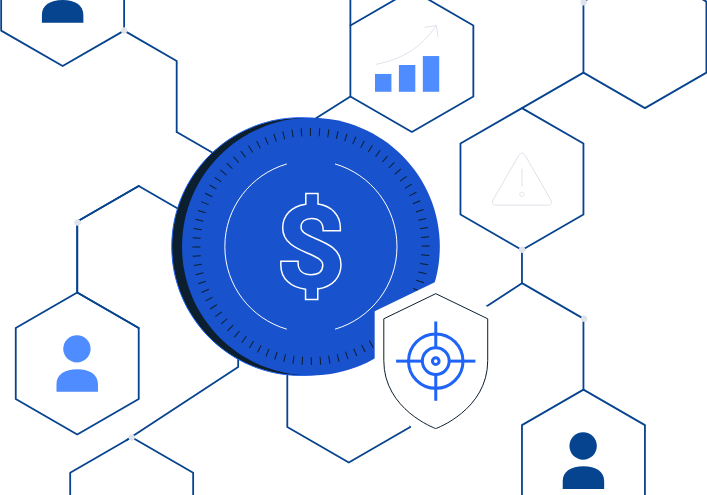The Crypto Maturity Model: How Law Enforcement Agencies Are Scaling Blockchain Intelligence

Law enforcement agencies around the world are navigating a rapid acceleration in crypto-enabled crime. As illicit transaction volumes increase significantly every year, traditional investigative approaches don’t scale with the current, fast-moving crypto threat landscape.
Across jurisdictions, a repeatable pattern has emerged in how agencies build the capacity to respond to these threats. This progression — what TRM calls the crypto maturity model — outlines the distinct stages through which agencies typically scale their blockchain investigative capabilities.
The crypto maturity model offers a structured framework for agencies to benchmark their current capabilities and develop a roadmap to move from reactive investigations to proactive threat disruption.
A decade of growth in illicit crypto activity
Back in 2014, the total volume of illicit activity involving cryptocurrency was around USD 400 million. By 2024, that number had surged to over USD 70 billion — a nearly 200x increase in just a decade.
This exponential rise in crypto crime is forcing agencies to evolve. Many are no longer asking if they need blockchain intelligence, but how they can scale it agency-wide to meet operational demand. Each stage represents a set of capabilities and challenges, and by understanding them, teams can more effectively plan training, secure budget approvals, and measure impact.
Stage 0: Manual tracing
Every agency begins at stage zero. Crypto enters a case for the first time. Maybe an officer turns it away, unsure of how to proceed. In some cases, they attempt a manual trace. But at this stage, there are no formal tools or processes in place — and no scalable path forward.
Stage 1: Specialists only
Stage one begins when agencies adopt blockchain intelligence tools like TRM Forensics to trace cryptocurrency in real time. These agencies often form small, specialized teams tasked with crypto-related cases — a strong first step in building internal capacity.
But these agencies often find that the growth in crypto cases is relentless. Within 12 to 24 months, these teams often find themselves overwhelmed — field officers frequently request support in triaging crypto evidence, and the case backlog grows.
Stage 2: Agency-wide enablement
Stage two begins when agencies start trying to enable their entire team in crypto investigation capabilities.
Most agencies adopt a hub-and-spoke model where:
- The hub: A central team of specialists using advanced tracing tools like TRM Forensics
- The spokes: Dozens, hundreds, or even thousands of frontline officers are equipped with TRM Triage to triage crypto artifacts in the field
TRM Triage gives frontline officers access to blockchain intelligence on their mobile devices, and is built specifically for non-crypto-specialists who may not have previous experience in digital asset investigations. With TRM Triage, officers who encounter crypto evidence can:
- Scan a crypto artifact or input a wallet address with their mobile device
- Instantly see relevant data, such as total funds held or links to known illicit activity — including drug trafficking, terror financing, human smuggling, and more
In some cases, the trace might require a specialist to get involved for a deeper analysis. Field officers can escalate evidence directly from TRM Triage into TRM Forensics. This model has proven successful for many agencies and enables them to scale their investigative efficiency by driving collaboration agency-wide.
Stage 3: Embedded intelligence
At stage three, blockchain intelligence becomes a fully embedded capability for proactively detecting and deterring threats. Law enforcement agencies integrate blockchain intelligence directly into their internal datasets and systems, which allows them to build custom workflows and conduct analysis at scale.
At stage three, agencies begin to:
- Seamlessly ingest mission-critical blockchain data via BLOCKINT API
- Programmatically surface key indicators such as balance changes, transaction volume, and behavioral patterns over time
- Identify cross-chain anomalies and correlations that would be difficult to detect manually
- Generate custom dashboards and alerts that map to internal priorities and investigative frameworks
In this stage, blockchain intelligence becomes not just a way to solve crime but an integrated system to proactively identify crime in your jurisdiction.
Supporting agencies at every stage
Whether your agency is just beginning its journey or optimizing a fully scaled crypto investigations program, TRM Labs is here to support you. With the right training and intelligence, you can stay ahead of today’s threats — and prepare for what’s next.
Learn more about how you can scale your agency’s crypto maturity with TRM Forensics, TRM Triage, and TRM BLOCKINT API.
Access our coverage of TRON, Solana and 23 other blockchains
Fill out the form to speak with our team about investigative professional services.




















